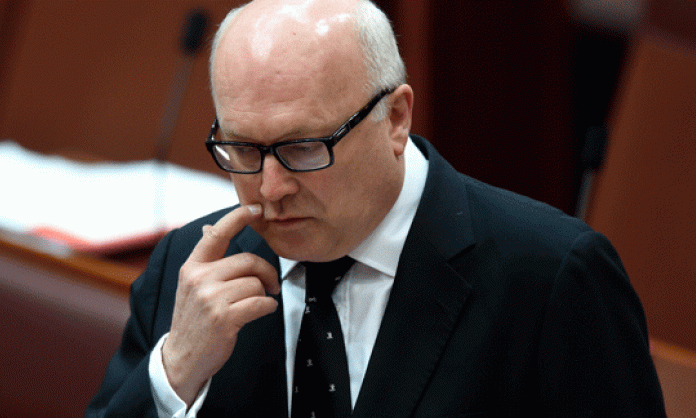After a determined boycott by artists, the Sydney Biennale arts festival announced in March that it was cutting ties with Transfield, which was recently awarded a contract to manage offshore detention centres.
Arts minister George Brandis chastised the festival and threatened to withdraw funding. Mark Carnegie, an investor, told the Australian Financial Review that the boycott was “bad for arts, bad for art funding and bad for the artists”.
Criticisms from government ministers and self-styled philanthropists are not unexpected; however, news outlet Crikey also condemned the boycott.
Crikey wrote in a 10 March editorial that it was “hard to disagree” with Carnegie’s statement. Echoing Carnegie’s labelling of the artists as “hypocrites”, the editorial chastises as “naive” artists who are nonetheless “happy” to exhibit their work in government-funded exhibitions when offshore detention is government policy.
The Crikey editors are wrong. Companies should not be able to “offset” their bad PR by sponsoring cultural events and parading around as great benefactors.
Targeting corporations that make a profit out of the misery of refugees highlights the link between cultural institutions and corporations. And the boycott puts pressure on the government: that’s what has ministers like George Brandis and Malcolm Turnbull frothing at the mouth. The government’s first concern is keeping Australia “open for business”.
It is revealing that the terrain of the debate is “what is and isn’t good for the arts”, rather than “what is good for refugees who are not only denied their freedom of expression, but also their liberty”.
Art does not transcend politics: art, like everything, is political.
Crikey’s political editor, Bernard Keane, wrote on 17 March, “[I]t’s a little hard to avoid the sense that Transfield has been targeted because asylum seekers and offshore processing is a totemic issue characterised by unthinking adherence to simplistic formulations.”
It’s not simplistic, but it is simple: people should not be locked up for seeking asylum.
Keane’s key criticism of the artists’ boycott is that it is “highly selective”. This common, simplistic objection is often levelled at boycott campaigns. Was the successful cultural boycott of apartheid South Africa invalid because the campaign did not also target Pinochet’s Chile or any of the other monstrous regimes of the time? Of course not. Boycotts must be judged on their own merits.
In the 1960s, the anti-apartheid movement began campaigning for cultural boycotts of South Africa. Artists were requested not to exhibit their works in the country. The boycott is widely celebrated for helping to isolate the apartheid state.
The reason the boycott of Transfield has drawn criticism is because it had an impact. It has also inspired others.
On 12 March, the Australian Services Union adopted a resolution calling on industry superannuation fund HESTA to divest from Transfield.
ASU president Sally McManus made it clear that union members did not want their retirement savings invested in a company that profits from mandatory detention. “They are welfare workers and they are not impressed that Transfield, which has no background or expertise in providing welfare services, is being contracted to deliver those services”, she said.
Maybe Crikey thinks that welfare workers are all naive hypocrites as well.
[Follow Kim on Twitter @kim_doyle1]




